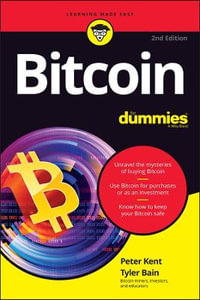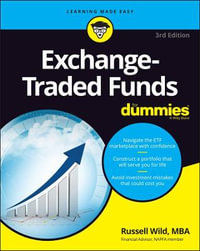Preface xxxix
Acknowledgments xliii
1 Basic Optical Calculations 1
1.1 Introduction 1
1.2 Wave Propagation 2
1.3 CalculatingWave Propagation in Real Life 7
1.4 Detection 26
1.5 Coherent Detection 26
1.6 Interferometers 29
1.7 Photon Budgets and Operating Specifications 30
1.8 Signal Processing Strategy 36
2 Sources And Illuminators 41
2.1 Introduction 41
2.2 The Spectrum 41
2.3 Radiometry 43
2.4 Continuum Sources 43
2.5 Interlude: Coherence 46
2.6 More Sources 50
2.7 Incoherent Line Sources 55
2.9 Lasers 57
2.10 Gas Lasers 59
2.11 Solid-State Lasers 59
2 Diode Lasers 61
2.13 Laser Noise 69
3 Optical Detection 81
3.1 Introduction 81
3.2 Signal-to-Noise Ratios 82
3.3 Detector Figures of Merit 83
3.5 Photomultipliers 100
3.6 Thermal Detectors 114
3.7 Image Intensifiers 115
3.9 How Do I Know Which Noise Source Dominates? 124
3.10 Hacks 129
4 Lenses, Prisms, and Mirrors 137
4.1 Introduction 137
4.2 Optical Materials 137
4.4 Surface Quality 141
4.5 Windows 142
4.6 Pathologies of Optical Elements 143
4.7 Fringes 143
4.8 Mirrors 147
4.10 Prism Pathologies 153
4.11 Lenses 154
2 Complex Lenses 158
3 Other Lenslike Devices 162
5 Coatings, Filters, and Surface Finishes 165
5.1 Introduction 165
5.2 Metal Mirrors 165
5.4 Simple Coating Theory 171
5.5 Moth-Eye Finishes 179
5.6 Absorptive Filters 180
5.7 Beam Dumps and Baffles 182
5.8 White Surfaces and Diffusers 186
6 Polarization 191
6.1 Introduction 191
6.2 Polarization of Light 191
6.3 Interaction of Polarization with Materials 193
6.4 Absorption Polarizers 197
6.5 Brewster Polarizers 197
6.6 Birefringent Polarizers 198
6.7 Double-Refraction Polarizers 199
6.8 TIR Polarizers 202
6.9 Retarders 203
6.10 Polarization Control 206
7 Exotic Optical Components 211
Introduction 211
Gratings 211
Grating Pathologies 214
Types of Gratings 215
Resolution of Grating Instruments 218
Fine Points of Gratings 219
Holographic Optical Elements 222
Photonic Crystals and Metamaterials 223
Retroreflective Materials 224
7.10 Scanners 225
7.11 Modulators 231
8 FiberOptics239
8.1 Introduction 239
8.2 Fiber Characteristics 239
8.3 Fiber Theory 242
8.4 Fiber Types 247
8.5 Other Fiber Properties 251
8.6 Working with Fibers 255
8.7 Fiber Devices 260
8.8 Diode Lasers and Fiber Optics 264
8.9 Fiber Optic Sensors 264
8.10 Intensity Sensors 265
8.11 Spectrally Encoded Sensors 266
8.12 Polarimetric Sensors 269
8.13 Fiber Interferometers 270
8.14 Two-Beam Fiber Interferometers 270
8.15 Multiple Beam Fiber Interferometers 272
8.17 Multiplexing and Smart Structures 276
8.18 Fiber Sensor Hype 276
9 Optical Systems 279
9.1 Introduction 279
9.2 What, Exactly, Does a Lens Do? 279
9.3 Diffraction 288
9.4 Aberrations 300
9.5 Representing Aberrations 303
9.6 Optical Design Advice 306
9.7 Practical Applications 308
9.8 Illuminators 311
10 Optical Measurements 315
10.1 Introduction 315
10.2 Grass on the Empire State Building 315
10.3 Detection Issues: When Exactly Is Background Bad? 318
1 Measure the Right Thing 322
10.5 Getting More Signal Photons 324
10.6 Reducing the Background Fluctuations 326
10.7 Optically Zero-Background Measurements 328
10.8 Spectrally Resolved Measurements 329
10.9 Electronically Zero-Background Measurements 333
10.10 Labeling Signal Photons 336
10.11 Closure 341
11 Designing Electro-Optical Systems 343
11.1 Introduction 343
11.2 Do You ReallyWant To Do This? 343
11.3 Very Basic Marketing 350
11.4 Classes of Measurement 352
11.5 Technical Taste 354
11.6 Instrument Design 357
11.7 Guiding Principles 361
11.8 Design for Alignment 364
11.9 Turning a Prototype into a Product 367
12 Building Optical Systems 371
12.1 Introduction 371
12.2 Construction Style 371
12.3 Build What You Designed 372
12.4 Assembling Lab Systems 373
12.6 Collimating Beams 381
12.7 Focusing 383
12.8 Alignment and Testing 385
12.9 Prototypes 386
12.10 Aligning Beams with Other Beams 387
12.11 Advanced Tweaking 390
12.13 Adhesives 397
12.14 Cleaning 400
12.15 Environmental Considerations 402
13 Signal Processing 405
13.1 Introduction 405
13.2 Analog Signal Processing Theory 406
13.4 Amplifiers 416
13.5 Departures From Linearity 416
13.6 Noise and Interference 420
13.7 Frequency Conversion 435
13.8 Filtering 438
13.9 Signal Detection 447
13.10 Reducing Interference and Noise 450
13.11 Data Acquisition and Control 452
14 Electronic Building Blocks 457
14.1 Introduction 457
14.2 Resistors 457
14.3 Capacitors 460
14.4 Transmission Lines 470
14.5 Transmission Line Devices 476
14.6 Diodes 477
14.7 Bipolar Junction Transistors 479
14.8 Field-Effect Transistors (FETs) 486
14.9 Heterojunction FETs 487
14.10 Signal Processing Components 488
14.11 Digitizers 496
14.12 Analog Behavior of Digital Circuits 505
15 Electronic Subsystem Design 507
15.1 Introduction 507
15.2 Design Approaches 507
15.3 Perfection 514
15.4 Feedback Loops 516
15.5 Local Feedback 522
15.6 Signal Detectors 522
15.7 Phase-Locked Loops 530
15.8 Calibration 535
15.9 Filters 537
15.10 Other Stuff 540
15.11 More Advanced Feedback Techniques 542
15.12 Hints 544
15.13 Linearizing 545
15.17 Bulletproofing 553
15.18 Interference 557
15.19 Reliable Designs 558
16 Electronic Construction Techniques 559
16.1 Introduction 559
16.2 Circuit Strays 559
16.3 Circuit Boards 560
16.4 Stray Coupling 563
16.5 Ground Plane Construction 563
16.6 Technical Noise and Interference 566
16.7 Product Construction 572
16.8 Getting Ready 574
16.9 Prototyping 576
16.10 Surface Mount Prototypes 582
16.11 Prototyping Filters 585
16.12 Tuning, or, You Can’t Hit What You Can’t See 587
17 Digital Signal Processing 591
17.1 Introduction 591
17.2 Elementary Operations 592
17.3 Dead Time Correction 595
17.4 Fourier Domain Techniques 595
17.5 The Fast Fourier Transform 602
17.6 Power Spectrum Estimation 608
17.7 Digital Filtering 612
17.8 Deconvolution 615
17.9 Resampling 617
17.10 Fixing Space-Variant Instrument Functions 618
17.11 Finite Precision Effects 619
17.12 Pulling Data Out of Noise 620
18 Front Ends 627
18.1 Introduction 627
18.2 Photodiode Front Ends 628
18.3 Key Idea: Reduce the Swing Across Cd 630
18.4 Transimpedance Amplifiers 631
18.5 External Input Stages 635
18.6 How to Go Faster 648
18.7 Advanced Photodiode Front Ends 652
18.8 Other Types of Front End 658
18.9 Hints 660
19 Bringing Up the System 665
19.1 Introduction 665
19.2 Avoiding Catastrophe 667
19.3 Debugging and Troubleshooting 670
19.4 Getting Ready 671
19.5 Indispensable Equipment 673
19.6 Debugging Pickup and Interference Problems 676
19.6.1 Test Setups 676
19.7 Digital Troubleshooting 677
19.8 Analog Electronic Troubleshooting 678
19.9 Oscillations 681
19.10 Other Common Problems 683
19.11 Debugging and Troubleshooting Optical Subsystems 685
19.12 Localizing the Problem 688
20 Thermal Control 695
20.1 Introduction 695
20.2 Thermal Problems and Solutions 696
20.3 Heat Flow 699
20.4 Insulation 705
20.7 Heat Sinks 716
23 Local Feedback Loops 723
20.9 Temperature Controllers 725
Appendix A Good Books 735
A.1 Why Books? 735
A.2 Good Books for Instrument Builders 735
Notation 743
Physical Constants and Rules of Thumb 745
Index 747












